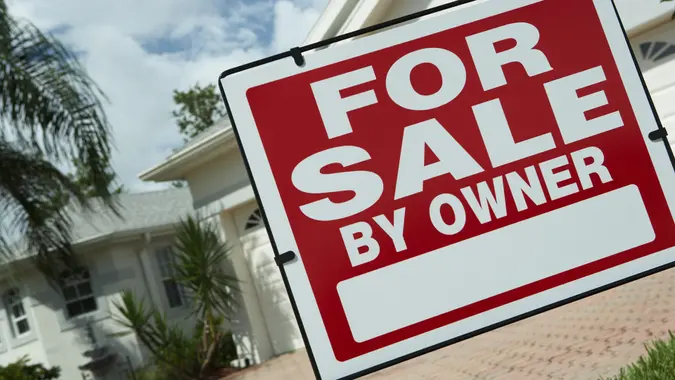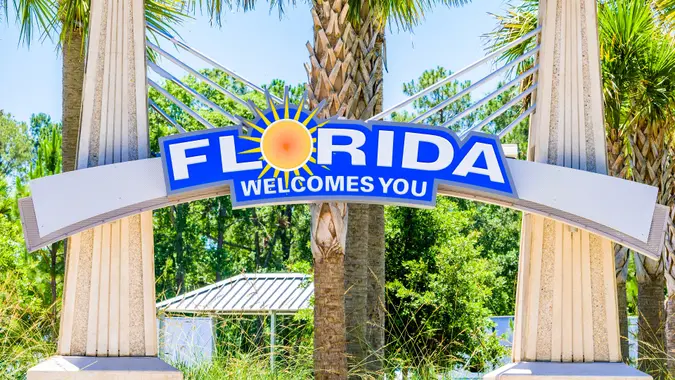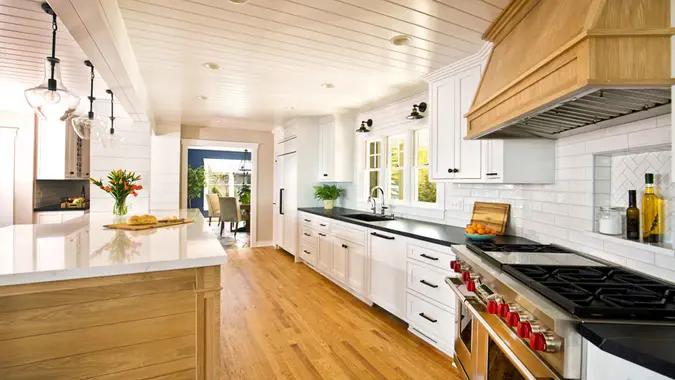What Is a Bridge Loan? Here’s What Homebuyers Should Know

Commitment to Our Readers
GOBankingRates' editorial team is committed to bringing you unbiased reviews and information. We use data-driven methodologies to evaluate financial products and services - our reviews and ratings are not influenced by advertisers. You can read more about our editorial guidelines and our products and services review methodology.

20 Years
Helping You Live Richer

Reviewed
by Experts

Trusted by
Millions of Readers
A bridge loan is a short-term loan for financing a new home purchase before you’ve sold your current home.
Most homebuyers need a significant amount of cash for closing the purchase of a new home. In addition to the down payment, you’ll have closing costs such as the origination fee on your loan, transfer tax and title insurance, to name just a few. If you’re relying on the sale of your current home to cover those costs, you could be left with a significant financial gap if the timing doesn’t work out as you hoped.
One solution is to make the purchase contingent on the sale of your current home. But that can weaken your offer, especially if you’re competing with a lot of other buyers.
A bridge loan fills the gap and eliminates the need for a contingency.
Keep Reading: How Middle-Class Earners Are Quietly Becoming Millionaires — and How You Can, Too
How a Bridge Loan Works
A bridge loan is a short-term loan that usually has a term of three months to a year. It buys you time to get your current home sold.
The bridge loan could be structured in one of two ways, for up to 80% of the combined value of your existing home and the home you’re purchasing, according to Quicken Loans:
- A second mortgage on the current home for the funds needed for the down payment and closing costs on the new home
- A new first mortgage that pays off the existing loan and cashes out equity for the down payment and closing costs for the new home
Bridge loans can be difficult to qualify for, and interest rates are usually higher than rates on a standard mortgage loan. However, you may be able to defer payments for at least a few months, and perhaps up to a year.
Example of a Bridge Loan
For this example, say you’re downsizing and have listed your current home for $450,000. Then you find the perfect home, but competition is fierce in your area and you don’t want to risk making your offer contingent on the sale of your current home. You offer the seller $350,000, which they accept, and pay a $5,000 deposit to be credited toward the down payment.
However, you want to make a full 20% down payment ($70,000) and need about $9,000 more for closing costs. You’ve already paid $5,000, so you’ll need a total of $74,000 for closing.
You apply and are approved for a $74,000 bridge loan from your current mortgage lender. The loan is a second mortgage against the equity in your home.
The bridge loan has application and origination fees, which the lender deducts from the $74,000. When the loan closes, you receive the remainder and add enough of your own funds to come up with the $74,000 cash you need to close on the purchase of your new home. Closing goes off without a hitch, and you move into your new home right on schedule.
Each month for the next three months, you make three loan payments: one for the mortgage on the home you’re selling, one for the bridge loan and one for the mortgage on your new home. Your previous home finally goes under contract, and you continue making all three payments until the sale closes. The mortgage loan and bridge loan on that home both get paid off at closing, and you keep any remaining proceeds of the sale.
Types of Bridge Loans
There are several types of bridge loans:
Open vs. Closed Bridge Loans
An open loan doesn’t have a defined end date while a closed loan does. Closed loans usually have lower rates than open ones.
First Charge vs. Second Charge Bridging Loans
A charge is what lenders use to secure the money they’re loaning to you. For example, an asset they could take if you can’t meet the terms of your loan. Charges are ranked in order that they have to be paid to lenders. A first charge loan means the lender will get their money before the lender of a second charge loan.
As a result, first charge loans often have lower interest rates than second charger loans.
Pros and Cons of a Bridge Loan
A bridge loan can keep you from missing out on a home you love, but like any loan secured by your home, it also can be risky.
Pros
- Lets you purchase the new home when you’re ready, regardless of whether your current home has sold
- May allow you to defer payments for anywhere from a few months to a year
- Eliminates the need for contingencies
Cons
- Comparatively high rates
- Two sets of closing costs — one for the bridge loan and one for the mortgage on the new home
- High cost of carrying two mortgages
- Defaulting on bridge loan could lead to foreclosure of home that secures the loan
Who Is Eligible for a Bridge Loan
According to LendingTree, you’ll need at least 20% home equity to be approved. Although credit score requirements will vary by lender, you’ll get the lowest rates and have the highest change of approval with a good credit score. Lenders will also check your debt-to-income ratio.
Is a Bridge Loan the Right Choice for You?
A bridge loan might make sense if one of the following situations applies to you:
- You’re relocating and have a deadline for your move
- A contingency on the offer of your dream home is likely to cause the seller to decline
- The benefits of buying the new home outweigh the risks of taking on an additional loan
- You have the means to make three loan payments each month while you wait for your current home to sell
If you’re not sure a bridge loan makes sense for you, consider these alternatives:
- Home equity loan or line of credit: If you have enough equity in your home, you can borrow against it for down payment money and closing costs.
- 80-10-10 loan: If you have a 10% down payment for the new home, an 80-10-10 combination loan, which consists of a first mortgage for 80% of the purchase price and a second mortgage for 10% of the purchase price, would cover the rest. You could use the proceeds from the eventual sale of your current home to repay the second mortgage.
- Personal loan: Personal loan rates are comparable to bridge loan rates for borrowers with excellent credit. However, it could be difficult to find a large enough loan, as many lenders cap personal loan amounts at $50,000 or less.
FAQ
- What is a bridge loan?
- A bridge loan is a short-term loan that can fund a real estate purchase before you’ve sold your primary residence.
- How does a bridge loan work?
- A bridge loan can help you fund the down payment and closing costs of a home while you’re selling your primary residence. The terms of the loan usually aren’t longer than a few months to a year. After you sell your primary residence, you can pay back the loan.
- What are the risks associated with bridge loans?
- Bridge loans are difficult to qualify for and can have higher interest rates than mortgages. They’re also contingent upon you selling your primary residence quickly and making a profit. Otherwise, it might be difficult for you to pay back the bridge loan and you risk foreclosure on your primary residence.
- Can I get a bridge loan with bad credit?
- It’s not impossible to get a bridge loan with bad credit, but it will depend on the lender. You might also have to pay higher interest rates if you are approved.
- How long does it take to get approved for a bridge loan?
- You can often get approved for a bridge loan in a couple of days. These loans are meant to help you move faster on a real estate purchase.
Our in-house research team and on-site financial experts work together to create content that’s accurate, impartial, and up to date. We fact-check every single statistic, quote and fact using trusted primary resources to make sure the information we provide is correct. You can learn more about GOBankingRates’ processes and standards in our editorial policy.
- Quicken Loans. "Bridge Loans: Everything You Need To Know."
- U.S. Bank. "How much house can I afford?"
- Corporate Finance Institute. "Bridge Loan."
- LendingTree "Bridge Loan: What It is and How It Works"
 Written by
Written by  Edited by
Edited by 

























